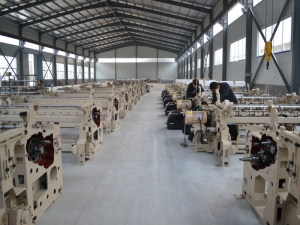Automation in Denim industry to improve product quality
The word denim actually comes from the French word "serge de Nimes", as it is a heavy duty fabric which initiated in Nimes, France. By tradition, it is woven with 100 percent cotton yarn, but in order to manage to shrink and crumples; it is normally blended with polyester or spandex. From the position of normal garments, denim has augmented to be a fashion and style icon and i

s being titivated by fashion models. At this time, it has turned out to be an icon of modeling and modern culture. The transmutation of jeans from a product to a fashion item happened at some stage in the 90s; when jeans evaluated into a number of a variety of other items, for example, jackets, shorts, skirts and all that, apart from the regular pants. Earlier different models like hippie bellbottoms and Tapered legs were well-liked. Current trend is all about variety and views denim as an item with bold styles to remain pace with the fast track life style.
Lets discuss on the subject of how denim is manufactured in industries and what procedures and methods are involved in the manufacturing of this outclass fabric. Well, starting with the initial process of constructing denim fabric, this is known as carding. Carding is actually the procedure of removing foreign matter from the cotton fibers. In this procedure, the fibers are heaved into a web-like shape. The fibrous mesh is made into a rope-like thread called a "sliver," The sliver is then spun into yarn all the way through the use of a spinning machine.
On the next stage, Denim fabric is twill weaving comprising blue and white fibers. The blue, or indigo, yarns in denim fabric are known as "warp thread". Warp threads run end-to-end, equivalent to the selvage. The white yarns are commonly known as "weft thread". Weft threads run the thickness of the textile. A twill weave is characterized as a textile that is constructed by warp, as well as filler yarns, creating an oblique on the right side of the fabric. The task of the weaving machine is to interlock the warp yarn in the midst of the filler yarn.
When the weaving machine has finished the fabric, it is then scrutinized for potential weaving faults and flaws. The fabric goes through processes known as brushing and scorching, which removes any contaminates plus balance the surface of the fabric. Moreover, the fabric is also washed to give it a pastel look.
At the end of the procedure, the denim garment is labeled with pricing and product ID information, folded and packed in a plastic carrier and shipped out to stores for sale or stocked in storehouses for future distribution.

